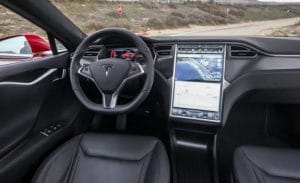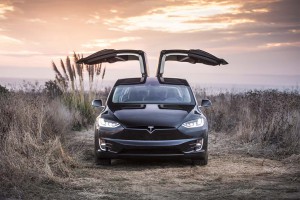
While Tesla’s financial picture continues to be rosy, the California-based EV maker’s struggle with safety issues keeps clouding that view, including a growing federal investigation into camera failures.
According to the National Highway Traffic Safety Administration, the company’s massive touchscreens occasionally fail. These shutdowns cause the vehicles to lose a variety of functions, in particular, its rear camera display, increasing the potential for collisions.
The problem, the agency said in a report, affects about 159,000 vehicles. NHTSA’s investigating the problem to determine what course of action should be taken, including a recall of the affected vehicles.
(Investigating issue with 63K Tesla Model S sedans.)
In addition to the loss of the rear-view camera, the affects the ability to defog or defrost the vehicles windows, which limits visibility. It also impacts the alert sounds for driver-assistance functions, Autopilot and turn signals, the Associated Press reported. Vehicle charging functions may be affected as well.

The probe follows an initial investigation in June covering 63,000 Model S vehicles with screens controlled by flash memory devices with finite lifespans based on the number of program and erase cycles. The screens can fail prematurely because the memory control unit, an Nvidia Tegra 3 processor, dies, the agency reported.
The same screens and processors were used in 2012 through 2018 Model S and 2016 to 2018 Model X vehicles built through early 2018, the agency said. Tesla’s aware of the issue and has even sent out an over-the-air update to mitigate the problem.
(Tesla Model Y hammered by quality issues.)
NHTSA reviewed 12,523 claims and complaints about the problem, accounting for about 8% of the vehicles potentially affected, Reuters reported. The automaker has gotten 2,399 complaints and field reports, 7,777 warranty claims, and 4,746 non-warranty claims related to MCU replacements.

Many complaints said Tesla requires owners to pay to replace the unit once warranties expire. NHTSA said the data showed “failure rates over 30% in certain build months and accelerating failure trends after 3 to 4 years-in-service,” Reuters reported.
However, adding to the problem are the complaints that said Tesla requires owners to pay to replace the unit once the warranty expires.








The downside of higher volumes. Meet the real world, Tesla.